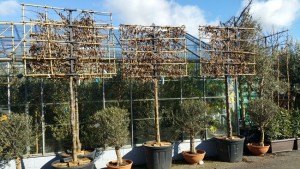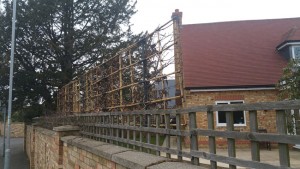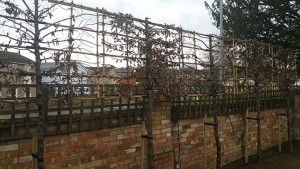 What are pleached trees?
What are pleached trees?
Pleaching is way of taming and teasing tree branches to create a narrow frame, formal screen or hedge. Tree growers tie and interlace the supplest, young shoots into a frame.
Why choose a pleached tree?
Firstly, you’d probably choose more than one. Why? Because they’re perfect for creating tree-lined walkways, arbours, tunnels and non-imposing, nice-to-see-over-the-fence screening. They create an instantly beautiful backdrop and the choice of foliage, flower and variety is numerous enough to lend itself to any taste or preference.
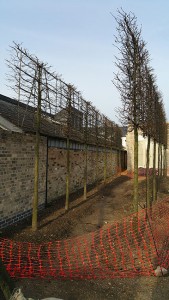 An aerial screen of pleached trees not only looks great for you and your neighbours, it can add an element of soundproofing and a create a windbreak, too. In this image (left), two rows of 2.2m stem pleached hornbeam are being used in a private garden in Cambridge to great effect – an attractive, unobtrusive screen for homeowner and neighbour, and a windbreak and an acoustic barrier, too.
An aerial screen of pleached trees not only looks great for you and your neighbours, it can add an element of soundproofing and a create a windbreak, too. In this image (left), two rows of 2.2m stem pleached hornbeam are being used in a private garden in Cambridge to great effect – an attractive, unobtrusive screen for homeowner and neighbour, and a windbreak and an acoustic barrier, too.
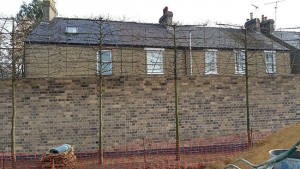
Standing proud. Will look glorious in full leaf
Which trees are great for pleaching?
The list is pretty limitless – any variety that lends itself to training. Our most popular varieties are hornbeam (Carpinus), lime (Tilia), ornamental pear (Pyrus), beech (Fagus), photinia and evergreen oak (Quercus ilex).
How are trees pleached?
It’s complicated and you don’t pleach a tree overnight! Skilled tree growers select young, whippy plants. They plant them in the winter and in their first years of growth, they prune in the winter, too. Then, each summer, they train and tie new shoots into a cane framework. They can be plaited with neighbouring trees too. Once this intricate branch lattice is established and strong enough to support itself, the supports can be removed.
The result?
- 1.8m lower stem pleached hornbeam
- Screening and dampening acoustics of passing traffic
- Lower stem=space saved
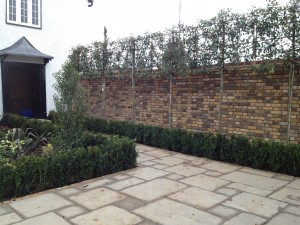
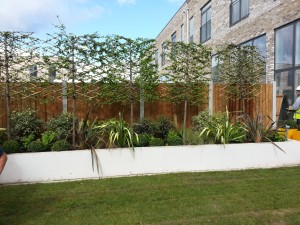
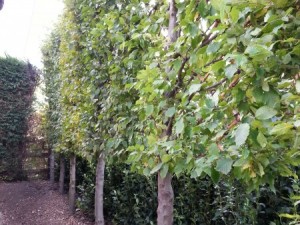
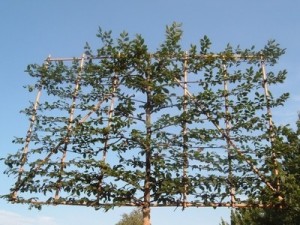 What are pleached trees?
What are pleached trees?